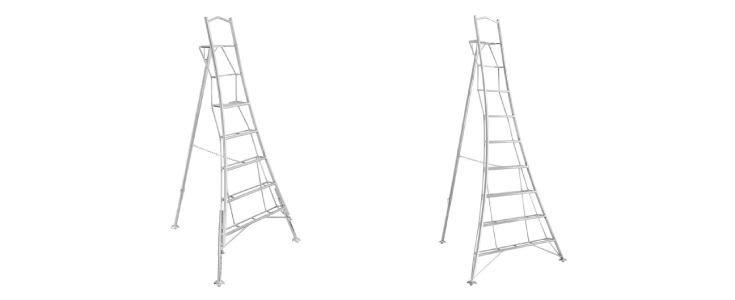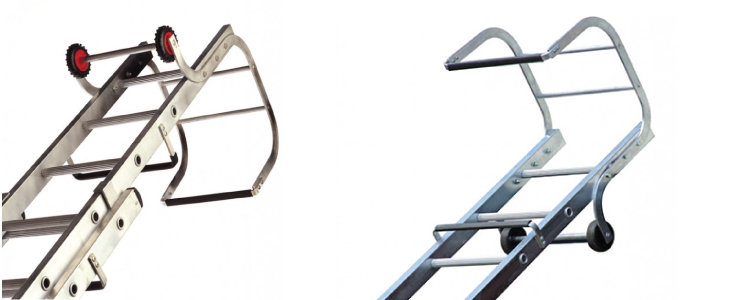Top innovations to improve safety on our ladders
22/06/2018
The invention of the ladder is thousands of years old. These days, with so many leading manufacturers of access equipment like Werner and Zarges, it’s fair to say that the ladder has come a long way since then! Here are just some of the innovations to hit the ladder market in recent years, all designed first and foremost to improve your safety.
Garden ladders and stepladders
We’ll start off with the ladder safety features that are mostly specific to garden ladders, although one or two can also be applicable to other types of ladders as well!
1. Clawed or slip-resistant feet
Obviously, stability is the foremost concern with the design of any ladder. On top of this, of all the thousands of injuries the HSE records each year as the result of a fall from height, many of them are caused by ladders slipping against a surface. Because of that, slip-resistant feet have become one of the most common features of modern ladders, including on those like this 3.2m Telescopic ladder. This has led to them widely being adopted in modern stepladders too, like these heavy-duty Chase Swingback Steps.
For garden ladders, clawed feet are the equivalent of this, digging into turf and other soft surfaces to minimise the chances of slippage and therefore injury to the user.

2. Internal ladder spreaders
Some stepladders, like these Werner fibreglass industrial swingback steps, feature an internal brace to bridge the gap between opposing sets of stiles. These spreaders are designed to reduce the risk of the ladder collapsing under the user’s weight. Even when they’re present and engaged though, the most crucial factor to preventing a ladder collapse is to make sure you’re adhering to its individual load-bearing weight!
3. Extendable legs
A relatively new innovation for garden ladders, many modern designs feature one (or more) extendable legs. This helps users to adapt to uneven surfaces by adjusting the legs as necessary until they have a stable surface from which to work. Many garden ladders make use of these adjustable legs as standard in addition to the clawed feet we mentioned above, ensuring maximum safety when performing garden tasks.
Roof and extension ladders
Due to their intended usage for differing tasks, extension ladders and roof ladders often have their own set of safety measures. Once again though, these safety measures are sometimes borrowed for other types of ladder designs.
1. Extruded hooks and ridge hooks

The idea behind ladder hooks is simple. They’re intended to quickly and conveniently attach the ladder to the surface you’re working from. This is a major concern with Working at Height several storeys above the ground, as extension ladders at this height cannot naturally provide the sort of stability that comes easily to garden or stepladders. In the event that the ladder starts to slip, its attachment to a wall or roof allows the user valuable time to escape injury – or even a fatal fall. While many extension ladders make use of extruded hooks, roof ladders make use of the bigger ‘ridge hooks’, such as those on our Lyte DIY triple extension ladders.
2. Various designs of rungs
The designs of rungs on most ladders these days are impressively varied. Again, in many cases they’re tailored to the ladder’s intended purpose. For example, on our Werner Heavy Duty Fibreglass Extension Ladders, there are the D-shaped rungs that are rounded on one side, with a flatter surface on the other. These are intended not only to be safer, but also to provide a more stable and comfortable surface for the user, so that more time can be spent on the job.
Meanwhile, there are also serrated rungs which follow the more traditional circular shape, but with tiny ridges along the outer edges. These are intended almost exclusively for safety, improving grip against footwear. Finally there are the butterfly rungs, which are notched in the middle so that they can safely rest against circular objects like poles, without fear of slipping.
Safety is naturally a major concern of ours here at Browns Ladders, and we take care to make sure each of our products are firmly in line with the standards expected by the industry. Feel free to browse our extensive range of ladders and access equipment right here on our site. If you’re looking for something specific, you can always give us a call on 01282 615517, and we’ll be happy to advise.